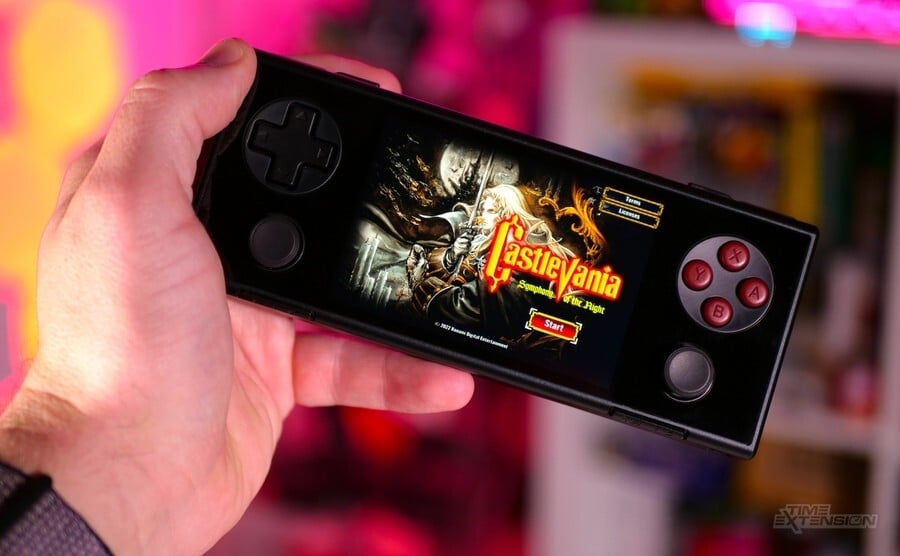
AYANEO clearly knows its audience when it comes to its 'Remake' range of hardware. A selection of products that take inspiration from past classics, it includes a Nintendo DS-style dual-screen gaming PC, a power bank shaped like a Super Nintendo and even a Game Boy-style handheld.
Today, however, we're taking a look at the Android-based AYANEO Pocket Micro, a member of the Remake line which aims to stir up nostalgic feelings about the Game Boy Micro, Nintendo's abortive attempt to create the most pocket-friendly handheld imaginable.
Can this modern-day tribute succeed where its inspiration failed? Let's find out...
AYANEO Pocket Micro Review: Design & Display
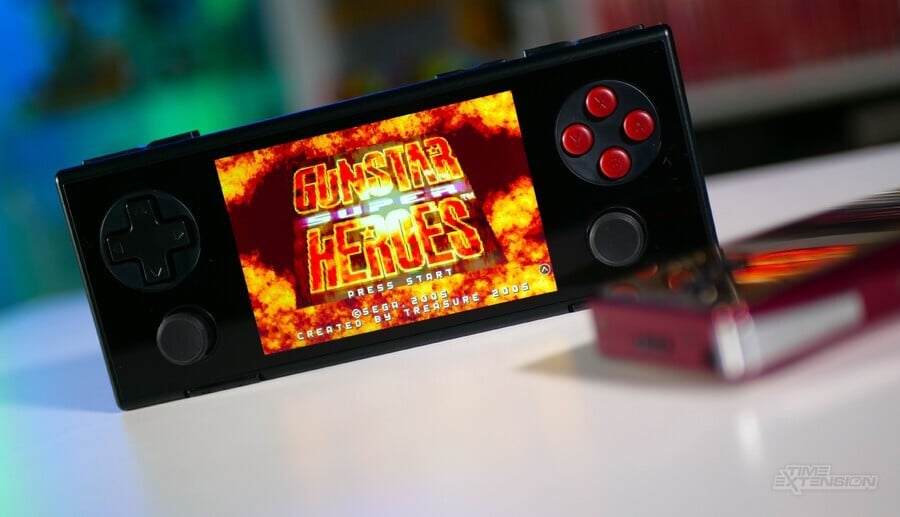
Before we get into the nitty-gritty of the review, it's worth noting that the unit we're reviewing here (8GB RAM / 256GB storage) is a pre-production sample and not the final retail version of the Pocket Micro. AYANEO told us that the unit could suffer from some small imperfections, which it claims will be ironed out before units are sent to those who back the system on crowdfunding. We didn't actually notice any of the potential physical issues we were warned about (light bleed on the display, issues with the MicroSD slot and sub-optimal button feel), but we felt it prudent to mention this all the same – the unit seen here may differ from the one that's sold to the public.
While it may be inspired by the aforementioned Game Boy Micro, the AYANEO Pocket Micro is a much larger device. It's actually bigger than your typical smartphone – and thicker, too. Constructed from CNC aluminium, the frame of the device is solid and premium-feeling, with a front made from laminated glass and the rear a single panel of plastic.
The face of the Pocket Micro features a 3.5-inch, 960x640 IPS touchscreen flanked by an array of gaming controls. The D-pad is excellent, despite AYANEO warning us that it might be sub-optimal on this pre-production model. We also love the fact that it's given pride of place above the left-hand analogue stick – something that wasn't the case on the AYANEO Pocket S.
The four face buttons are rather small, but they get the job done. The dual analogue sticks – which use Hall sensors – are pleasant to use, too, even if we did find that they sometimes got in the way when using the D-pad and buttons; we kept accidentally brushing them with our thumbs during gameplay. The other downside of the sticks is that they protrude quite dramatically from the casing, which makes it tricky to slip the Pocket Micro into your pocket.
On the very bottom edge of the device's face, you'll find four function keys: Start, Select, AYANEO and Home. Three of those should be pretty self-explanatory, but the AYANEO button perhaps requires some detail; this pops out AYANEO's custom launcher window, which allows you to toggle elements such as CPU performance, screen brightness, vibration and more.
On the top edge, there are four in-line shoulder buttons, a volume rocker and a power button which also contains a fingerprint scanner, which can be used as part of the Android OS to secure the device from unwanted use and to make secure payments in the Google Play Store.
On the bottom edge, there are (somewhat weak) downward-firing stereo speakers and a single USB-C port used for both charging and data transfer. On the left-hand edge, there's the MicroSD card slot (protected by a rather fiddly rubber door), and on the right-hand side are two additional function keys. The rear of the device is largely featureless, outside of the large vent for air circulation. There's also a second vent on the top which combines with the one on the back to allow cool air to flow through the unit.
The 3.5-inch IPS screen isn't quite as punchy as an OLED panel would be, but it's bright and colourful nonetheless. Because it's lower than HD resolution, it means there's less demand on the Pocket Micro's chipset, but its size presents some rather irksome issues after prolonged usage.
Simply put, navigating the Android OS via touch with such a small display is often more frustrating than it needs to be; typing with the on-screen keyboard is fiddly and annoying. Once you've got things set up the way you want them you'll probably spend less time using the touchscreen for interaction, but it's painfully clear that Google's OS was not designed with devices like the Pocket Micro in mind.
AYANEO Pocket Micro Review: Software

The AYANEO Pocket Micro is running version 13 of Google's popular Android OS, which means it benefits from smartphone-style functionality and access to a wide range of apps and games, all downloaded via the Google Play digital store.
On top of this, AYANEO has also included its own custom software offerings, dubbed AYASpace and AYAHome. The company has been fine-tuning this package over both its Windows and Android-based products for the past couple of years, and it's getting better with each update.
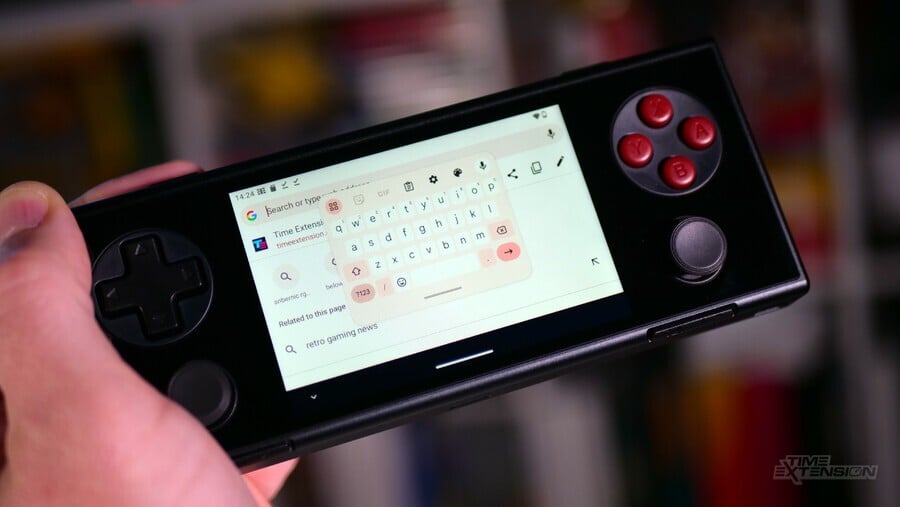
As well as the quick settings menu we mentioned previously, you can create curated lists of retro games within the AYAHome app, with the software even going as far as to scrape box art and screenshots for you in order to give your collection that personal touch.
However, getting all of this up and running smoothly is easier said than done, and a lot of tinkering (and trial and error) is required before you'll get things looking exactly how you want them to.
AYANEO deploys regular updates to several of its custom software offerings, all of which are installed seamlessly and without much fuss – which bodes well for the future evolution of its AYAHome and AYASpace apps.
AYANEO Pocket Micro Review: Performance & Battery Life
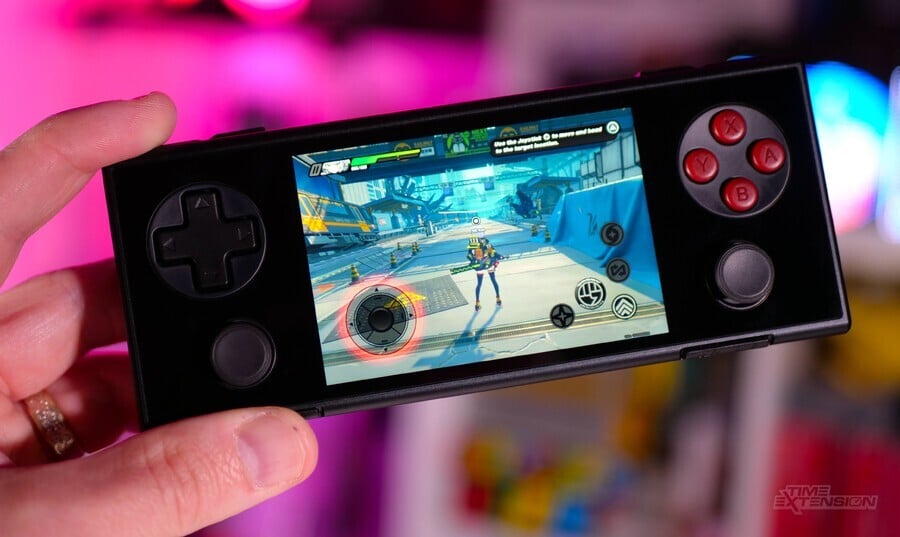
Unlike its sibling, the Pocket S, the Pocket Micro is powered by a Helio G99 chipset, which means you're getting slightly less bang for your buck in terms of pure processing grunt. The fact that the Pocket Micro has a lower-resolution display mitigates this somewhat, but don't go expecting perfect PS2 and GameCube emulation on this thing – even when you've got the 'max' performance mode enabled.
While some of the less-demanding PS2 titles run in a playable state, many of the games we loaded up displayed disappointing levels of stutter. Burnout 3, for example, was virtually unplayable in NetherSX2's OpenGL GPU renderer; switching to Vulkan improved things, but not to the point where we'd say it was even approaching perfect. Gradius V ran well enough but was still prone to random pauses and stutters.
The other negative here is that by pushing the hardware to its limit, you're also forcing it to make use of its internal fan to keep things cool, and that can get very noisy indeed. Of course, this is very much a part of modern-day handheld gaming – after all, the Steam Deck and Switch both have internal fans – but when you've got a device which is this small and compact, it becomes a lot more noticeable.
Given that the AYANEO Pocket S does a much better job in terms of high-level emulation, it's a little disappointing that the Pocket Micro can't quite keep up – but not entirely shocking when you consider that it's a smaller, cheaper device with a weaker chipset inside.
However, if you're looking to emulate stuff from the Dreamcast or earlier, then things are a lot more agreeable. The Pocket Micro has enough power on tap to make short work of everything 8 and 16-bit you throw at it, and can handle PS1, N64 and Saturn games, too. It really shines when playing GBA games, as that screen makes games like Super Mario World, Gunstar Super Heroes and Golden Sun really sing. Another plus that's worth mentioning is that Android now has many, many amazing emulators available for it, many of which are bundled up in the excellent RetroArch front end.
Outside of emulation, it's worth noting that there are loads of really good games available natively for Android, including the likes of Vampire Survivors, Zenless Zone Zero, Dead Cells, Chrono Trigger, Castlevania: Symphony of the Night, GTA: San Andreas and many, many more – all of which run brilliantly on this device.
The AYANEO Pocket Micro's 2600mAh battery isn't the largest we've seen in an emulation handheld, but given the diminutive size of the unit, it's hard to imagine the manufacturer being able to cram anything bigger inside. Stamina is relative to the kind of work you're expecting the system to do; push the performance up to maximum and fire up the internal fan, and you'll be lucky to get even a couple of hours; switch to 'balanced' or low power mode, and you could see over four hours of use before you need to return to the plug socket.
AYANEO Pocket Micro Review: Specifications

| Screen size | 3.5-Inch borderless IPS 960 × 640|330PP| |
| CPU | MediaTek Helio G99 |
| Memory | LPDDR4X 4266Mbps |
| OS | Android 13 |
| Software | AYASpace front-end, AYAHome launcher |
| Storage | 6GB + 128GB 8GB + 256GB |
| Connectivity | WiFi 5 / BT 5.2 |
| Motion Control | Six-axis gyroscope |
| Vibration | X-axis linear motor |
| Heat Control | Active Air Cooling |
| Interface & Expansion | 1X USB Type-C |USB 2.0 OTG 1X Micro SD Card Slot | SD 3.0 |
| Biometrics | Power key integrated audio fingerprint recognition |
| Battery | 2600mAh |
| Size | 156 × 63 × 18mm |
| Weight | 233g |
| Available Colours | Magic Black / Soul Red / Retro Gray |
AYANEO Pocket Micro Review: Pricing
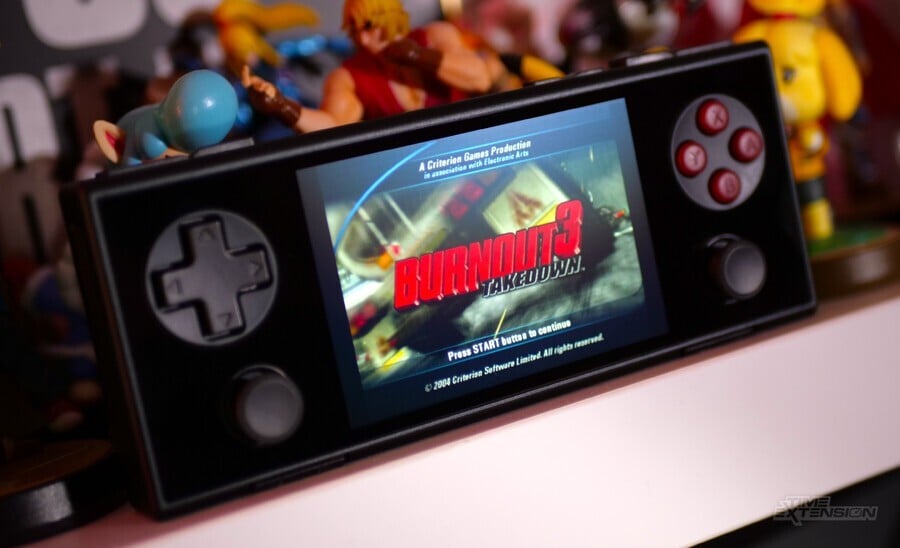
The AYANEO Pocket Micro comes in two variants.
The 6GB RAM / 128GB storage option retails for $219 / £167 ($189 / £144 early bird) GBP, while the 8GB RAM / 256GB storage variant sells for $279 / £190 ($249 / £167 early bird).
Both can be pre-ordered on IndieGoGo now.
AYANEO Pocket Micro Review: Conclusion
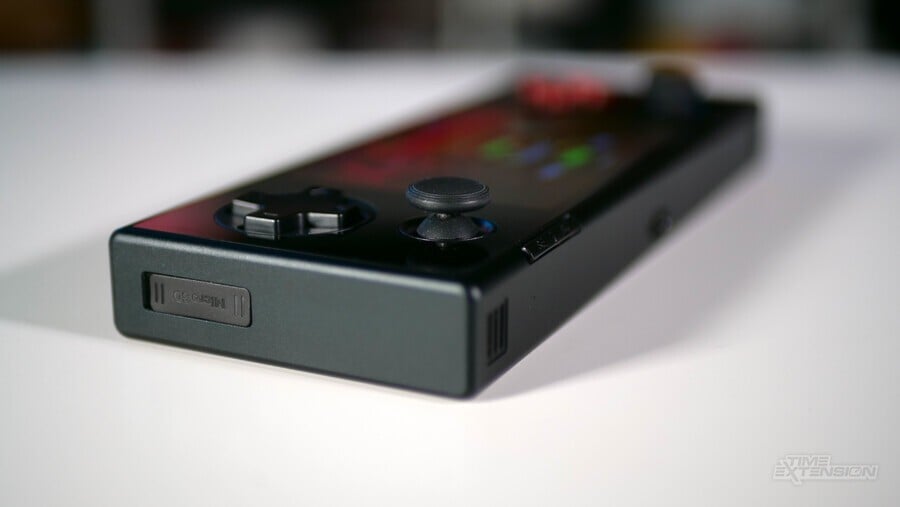
The AYANEO Pocket Micro is certainly one of the most compact and aesthetically appealing attempts we've seen so far when it comes to fusing Android with a retro gaming focus, and its premium feel makes a positive first impression.
The Helio G99 is powerful enough to handle emulation right up to the Dreamcast era, although it does struggle beyond that – which means that rival Android devices have the edge.
However, the Pocket Micro's slim profile and gorgeous looks count for a lot, so if you're looking for a competent emulation platform which is also capable of hosting AAA Android games, then this could be the handheld for you.
Thanks to AYANEO for supplying the Pocket Micro used in this review.
